How to Watch TV in an RV: Enjoy Seamless Entertainment on the Go
Embarking on an RV adventure doesn’t mean you have to leave your favorite TV shows and movies behind.
With the right setup, you can enjoy a seamless viewing experience wherever your travels take you.
Let’s explore the best methods to watch TV in your RV, ensuring you stay entertained on the open road.
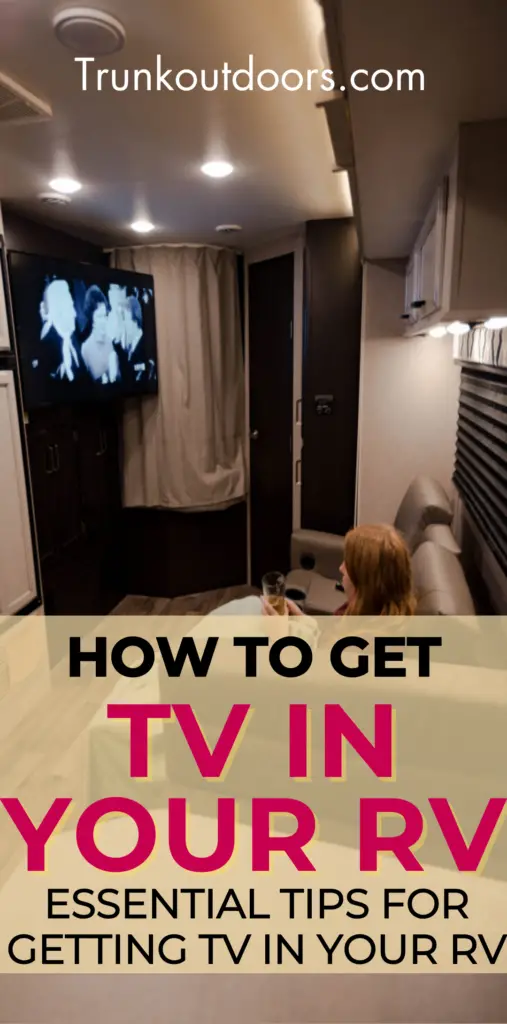
Understanding Your RV TV Options
When it comes to watching TV in your RV, you have several options to consider. Each has its own advantages and drawbacks, so let’s dive in and find the perfect fit for your travel lifestyle.
Cable TV: Classic Campground Entertainment
Cable TV remains a popular choice for RVers, especially those who frequent campgrounds with cable hookups. Here’s what you need to know:
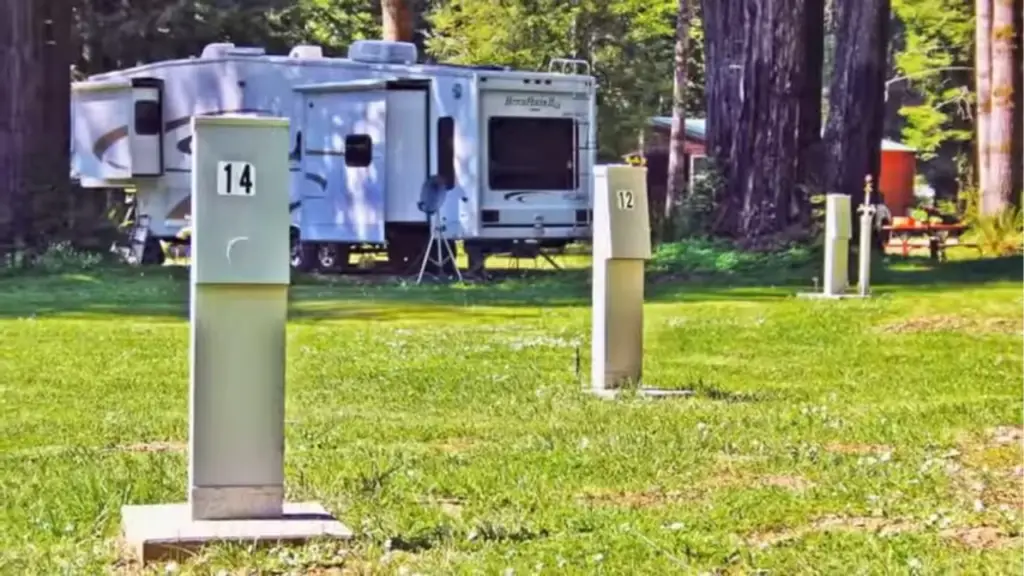
- How it Works: Most modern RVs come equipped with a cable input. Simply connect the campground’s cable to your RV, and you’re ready to watch.
- Pros:
- Ease of Use: Simply plug in and start watching. No complicated setup required.
- Cost-Effective: Often included in your campsite fee, making it a budget-friendly option.
- Reliable Signal: Generally provides a stable signal, ensuring uninterrupted viewing.
- Cons:
- Limited Availability: Only available at campgrounds that offer cable hookups.
- Variable Channel Selection: Channel lineup can vary significantly between campgrounds.
- Quality Dependent on Campground: You’re at the mercy of the campground’s cable quality, which can vary.
- Tips:
- Bring Your Own Coaxial Cable: Campground cables can be worn out, so having your own ensures a better connection.
- Check Channel Lineup Ahead of Time: Contact the campground to confirm the channels they offer.
- Consider a Signal Booster: If you experience fuzzy reception, a signal booster can enhance the quality.
Over-the-Air Antennas: Free Local Broadcasts
Over-the-air (OTA) antennas are a budget-friendly way to access local broadcast channels for free. Here’s how to make the most of them:

- How it Works: An OTA antenna captures TV signals broadcast by local stations. Mount it on your RV’s roof or use a portable version inside.
- Pros:
- Cost-Effective: After the initial purchase, you get free TV with no subscription fees.
- Local Content: Access to local news, weather, and emergency information, which is crucial for travelers.
- No Internet Needed: Doesn’t rely on internet or cable connections, making it ideal for remote areas.
- Cons:
- Limited Channel Selection: Especially in rural areas, where fewer channels are available.
- Signal Variability: Signal strength can vary based on location and terrain.
- Setup Required: Initial setup and occasional adjustments are necessary for optimal reception.
- Types of OTA Antennas:
- Omnidirectional: Captures signals from all directions, ideal for travelers who move frequently.
- Directional: Needs to be pointed towards broadcast towers but often has better range.
- Amplified: Boosts weak signals, perfect for rural areas with poor reception.
- Tips:
- Use a TV Signal Finder App: Apps like TV Fool can help locate nearby broadcast towers.
- Experiment with Antenna Placement: Higher placements generally yield better reception.
- Consider a Signal Amplifier: For areas with weak signals, an amplifier can significantly improve reception.
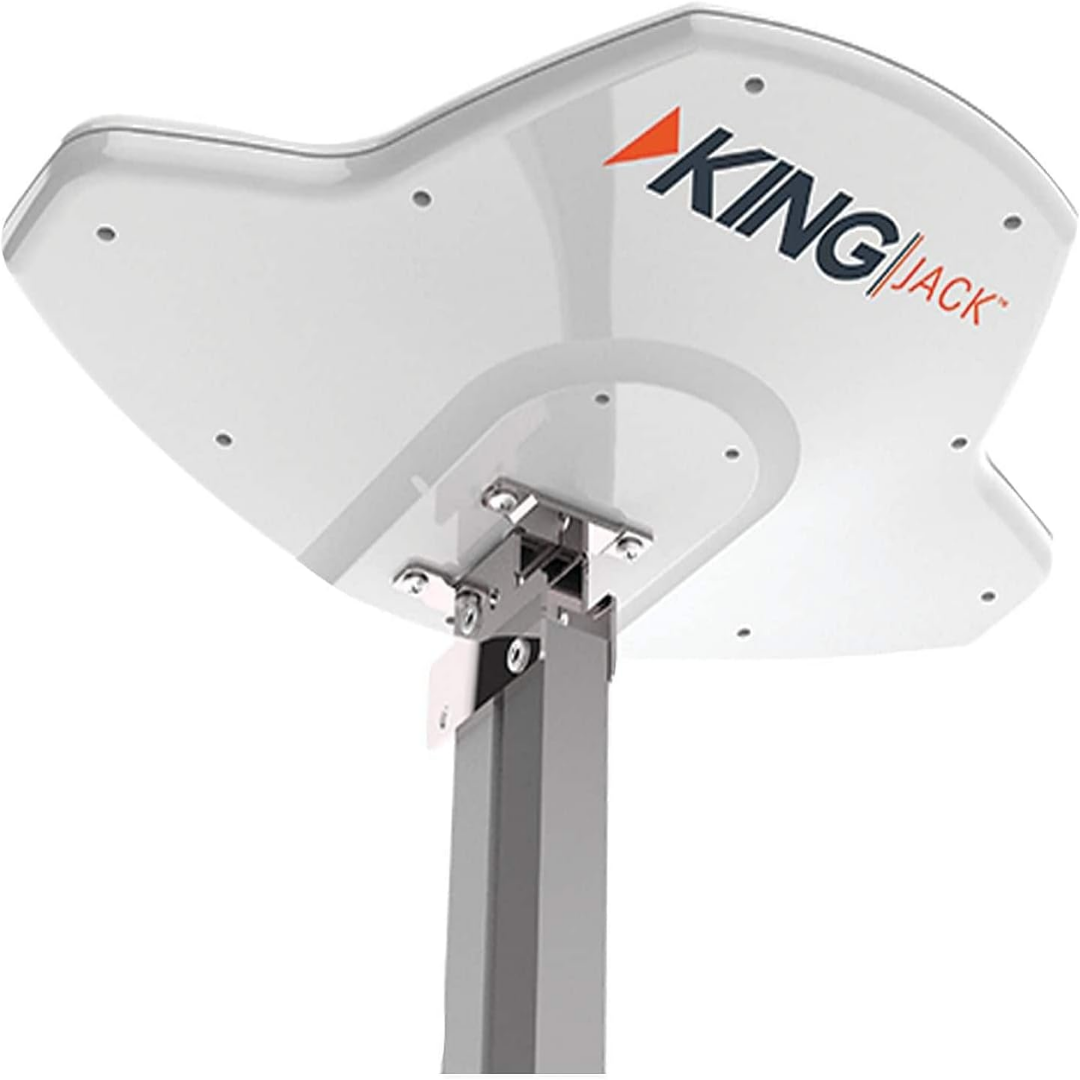
Long-range signal acquisition gets more channels
Satellite TV: Premium Entertainment Anywhere
For those who want a home-like TV experience on the road, satellite TV is a great option. Here’s what you need to know:
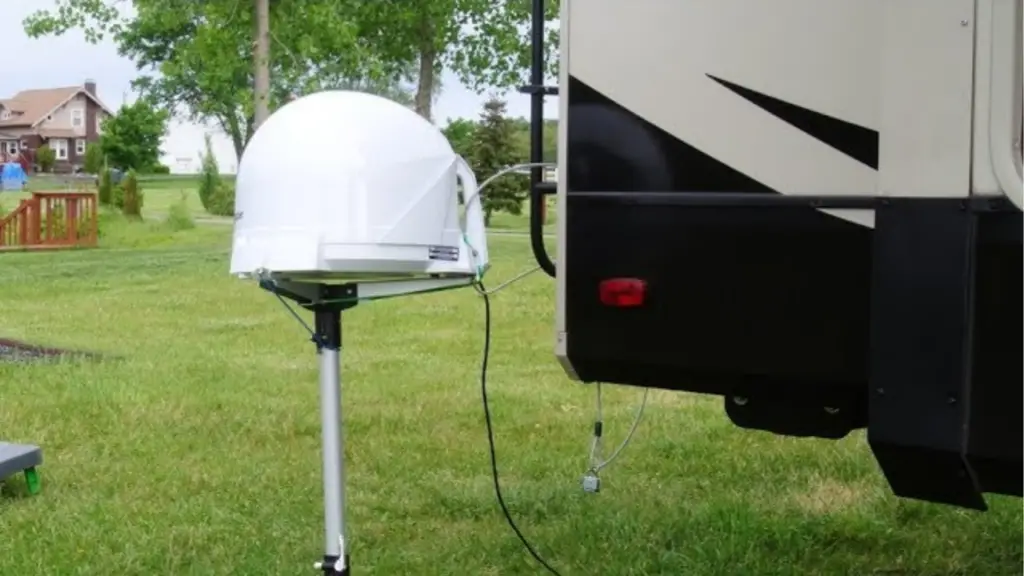
- How it Works: A satellite dish on your RV roof communicates with satellites in orbit to receive TV signals. You’ll need a receiver and a subscription to a satellite TV service.
- Pros:
- Wide Channel Selection: Offers a variety of channels similar to what you’d get at home.
- Availability: Available almost anywhere with a clear view of the southern sky.
- Familiar Interface: Many users find the interface and programming familiar and easy to navigate.
- Cons:
- Cost: Can be expensive due to equipment costs and monthly subscription fees.
- Clear Line of Sight Required: Needs an unobstructed view of the southern sky, which can be challenging in wooded or urban areas.
- Setup Complexity: Initial setup can be tricky, especially for beginners.
- Types of Satellite Systems:
- Portable: Set up when parked and stored while driving, offering flexibility.
- Roof-Mounted: Permanently installed on your RV roof, with some models functioning even while driving.
- Automatic: Automatically finds the satellite signal, providing convenience but at a higher cost.
- Tips:
- Practice Setup Before Your Trip: Familiarize yourself with the setup process to save time and hassle on the road.
- Be Aware of Obstructions: Trees, buildings, and other obstacles can block your signal.
- Consider a Tripod-Mounted Dish: Offers flexibility in positioning to optimize signal reception.
Streaming Services: The Modern RV Viewing Experience
Streaming services offer a flexible and vast selection of on-demand content, perfect for RVers. Here’s how to make the most of them:
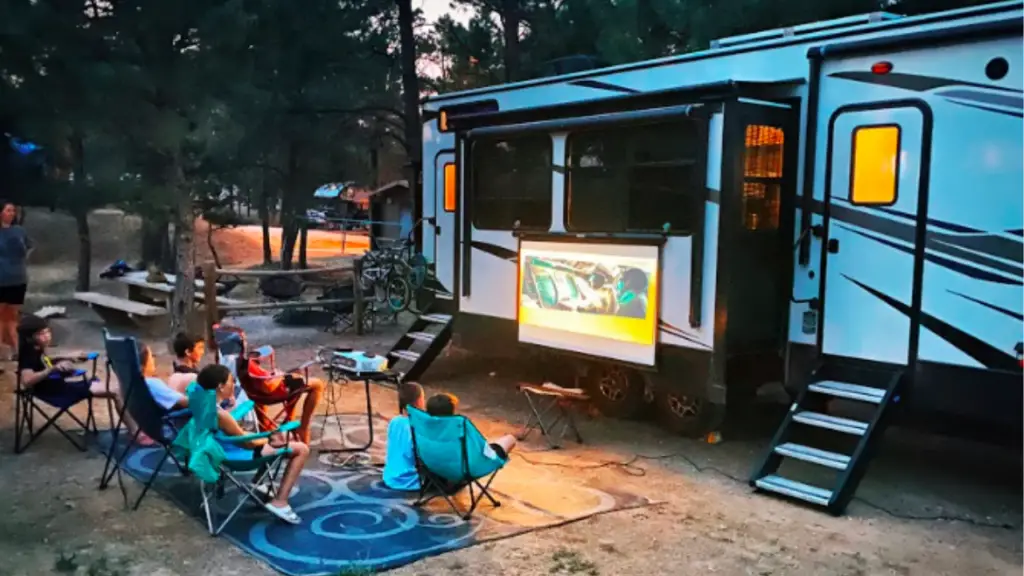
- How it Works: Using an internet connection, stream content directly to your devices or smart TV.
- Popular Paid Services:
- Netflix: Known for original content and a vast library of movies and TV shows.
- Hulu: Offers next-day streaming of current TV shows from major networks.
- Amazon Prime Video: Comes bundled with Amazon Prime membership, offering a wide range of content.
- Disney+: Home to Disney, Pixar, Marvel, Star Wars, and National Geographic content.
- YouTube TV: Provides live TV options from major networks and cable channels.
- Free Streaming Services:
- Pluto TV: Offers live TV channels and on-demand content without a subscription.
- Crackle: Provides a rotating selection of movies and TV shows.
- Tubi: Features a large library of movies and TV shows with occasional ads.
- The Roku Channel: Available on Roku devices and online, offering free movies and TV shows.
- Pros:
- Vast Content Library: Access to a wide range of on-demand content.
- Multi-Device Compatibility: Watch on smartphones, tablets, laptops, and smart TVs.
- No Additional Equipment Needed: Use existing devices to stream content.
- Free Options Available: Budget-friendly options for cost-conscious RVers.
- Cons:
- Requires Reliable Internet: Streaming quality depends on internet speed and stability.
- Data Usage: Can consume a lot of data, especially with high-definition content.
- Limited Live TV Options: Live TV offerings are more limited compared to cable or satellite.
- Advertisements: Free services often include ads, which can be disruptive.
- Internet Options for RVers:
- Cellular Data Plans: Consider unlimited plans or mobile hotspots for consistent connectivity.
- Campground Wi-Fi: Often available but can be slow or unreliable.
- Satellite Internet: Expensive but works in remote areas.
- Starlink for RVs: New technology offering growing popularity and coverage.
- Tips:
- Download Content for Offline Viewing: Use public Wi-Fi to download shows and movies for later viewing.
- Use a Streaming Device: Devices like Roku, Amazon Fire Stick, or Chromecast enhance the streaming experience.
- Consider a Cell Signal Booster: Improves internet connection in remote areas.
- Mix Free and Paid Services: Customize your entertainment package to suit your preferences and budget.
- Data-Saving Strategies: Adjust video quality settings, use audio-only mode for talk shows or news, and download content on public Wi-Fi.
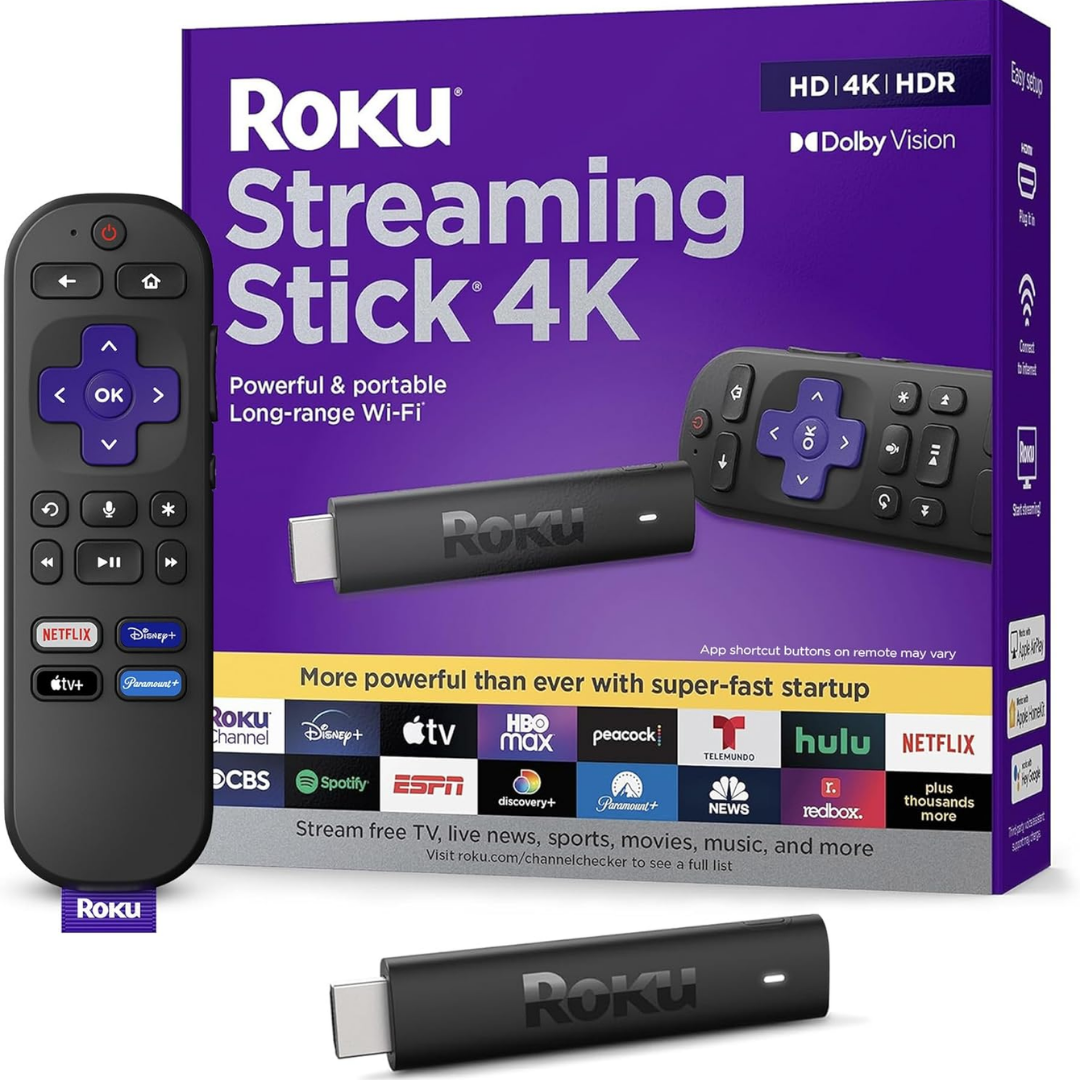
Hides behind your TV: The stick design plugs right into your TV with a simple setup
DVDs and Blu-rays: Reliable Off-Grid Options
For off-grid entertainment, physical media like DVDs and Blu-rays are a reliable option. Here’s how to incorporate them into your RV setup:
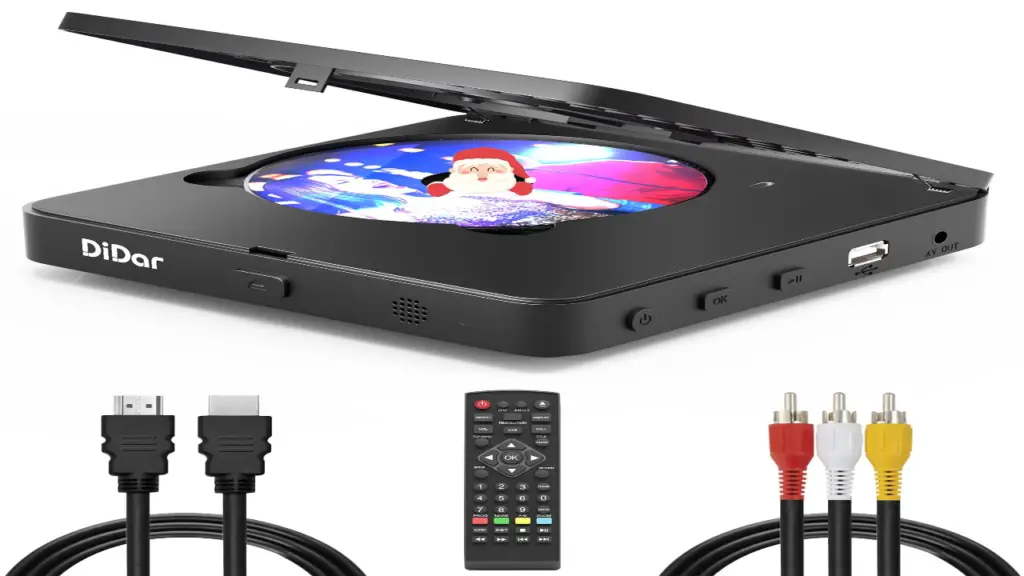
- Pros:
- No Internet Required: Ideal for areas with poor or no internet connectivity.
- Ownership of Content: No subscription fees or reliance on streaming services.
- Great for Repeat Viewing: Perfect for kids’ favorites or classic movies you love to rewatch.
- Cons:
- Limited to Physical Collection: Only access to content you bring with you.
- Storage Space: Takes up valuable storage space in your RV.
- Disc Damage: Discs can get scratched or damaged during travel.
- Tips:
- Store Discs in a Travel Case: Protect discs from damage and keep them organized.
- Consider a Combo TV/DVD Player: Saves space and reduces the need for multiple devices.
- Build a Digital Library: Store movies and shows on a hard drive for space-saving and convenience.
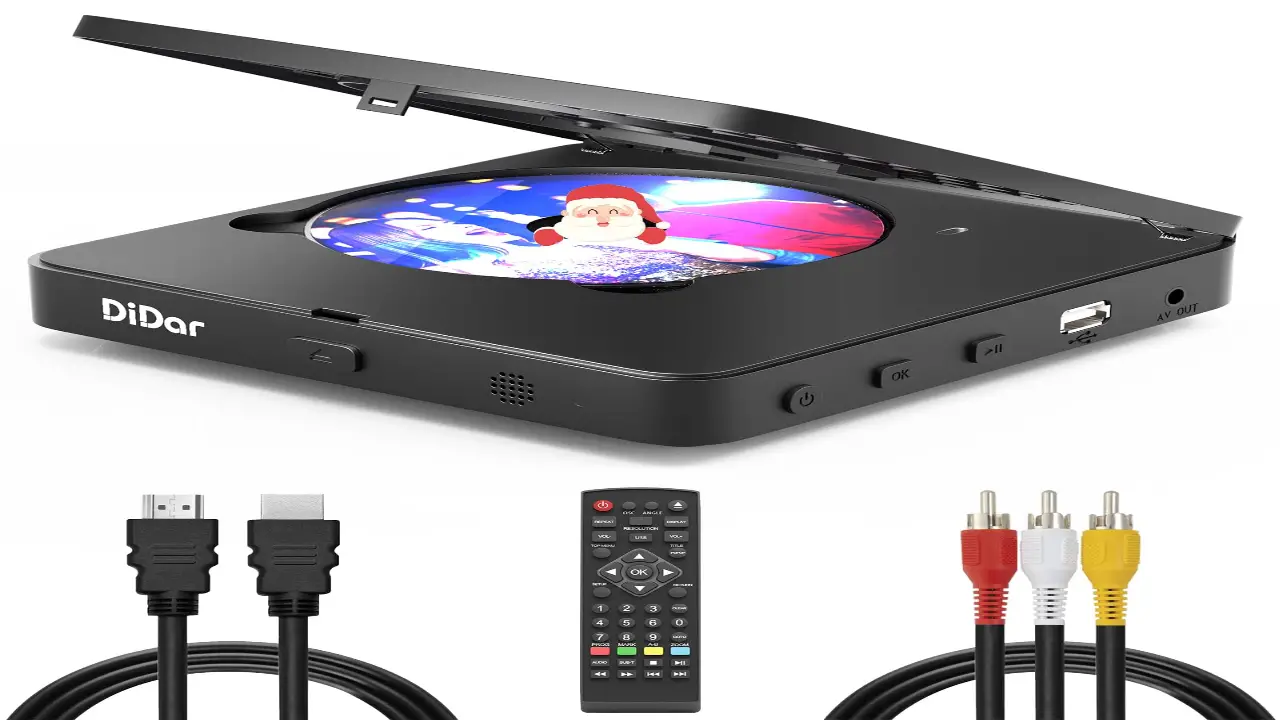
Full HD 1080P- Watch the latest Blu-ray Disc movies in Full High Definition quality, for depth and image clarity far exceeding that of DVD. so you can enjoy astonishing detail for all of your favorite movies.
Enhancing Your RV Viewing Experience
To make the most of your RV TV setup, consider these tips for a seamless viewing experience:
- Choose the Right TV:
- 12V TVs: Designed for RV use, these TVs run on your RV’s electrical system.
- LED Models: Energy-efficient and provide excellent picture quality.
- Size Matters: Ensure the TV size is appropriate for your RV’s layout and viewing distance.
- Mount Securely:
- RV-Specific Mount: Designed to withstand road vibrations and ensure safety.
- Swivel Mount: Offers flexible viewing angles, allowing you to watch from different areas of your RV.
- Power Management:
- Be Aware of Power Usage: Especially when boondocking, monitor your power consumption.
- Consider a Power Inverter: Allows you to use standard TVs off-grid by converting DC to AC power.
- Sound Solutions:
- Headphones or Soundbar: Enhances audio quality without disturbing neighbors.
- Bluetooth Speakers: Offers flexibility and convenience for audio playback.
- Create a Cozy Viewing Area:
- Cushions and Throws: Add comfort and personalize your viewing space.
- Blackout Curtains: Block out external light for better daytime viewing.
- Maintain Equipment:
- Regular Checks: Inspect your antenna or satellite dish for damage or obstructions.
- Keep Cables in Good Condition: Ensure all connections are secure and cables are undamaged.
- Have a Backup Plan:
- Download Shows: Use public Wi-Fi to download content for offline viewing.
- Bring DVDs or a Hard Drive: Ensure you have entertainment options even in off-grid situations.
Final Tips for a Perfect RV TV Setup
- Know Your Options: Understand the pros and cons of each method to find the best fit for your travel style.
- Consider Your Budget: Factor in both upfront costs and ongoing expenses when choosing your TV solution.
- Be Flexible: Having multiple options ensures you’re never without entertainment.
- Balance Screen Time: Don’t let TV watching take over your trip. Enjoy the outdoors and explore your surroundings.
- Stay Informed: TV technology is always evolving. Keep an eye out for new solutions that might enhance your RV viewing experience.